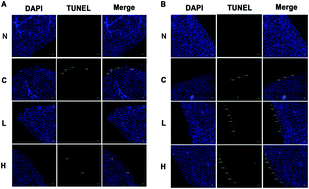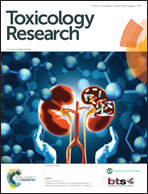miR-122 plays an important role in ochratoxin A-induced hepatocyte apoptosis in vitro and in vivo
Abstract
OTA can induce hepatotoxicity. Our previous research has shown that miRNAs play important roles in the OTA-induced hepatotoxicity. And miR-122 is the most abundant miRNA in the liver and is involved in diverse biological processes. This study was performed to clarify the role of miR-122 in OTA-induced hepatotoxicity. The expression levels of miR-122 and the target genes were quantified by real-time PCR. The OTA-induced apoptosis of hepatocyte and HepG2 cells was evaluated using a TUNEL kit, a CCK-8 kit, a flow cytometer and Hoechst 33342. miR-122 was inhibited in HepG2 cells. The results revealed that OTA affected rat hepatocyte apoptosis. miR-122 decreased at 4 weeks but increased at 13 weeks in the OTA-treated livers, and increased in the OTA-treated HepG2 cells; and the mRNA levels of CCNG1 and Bcl-w increased at 4 weeks and decreased at 13 weeks in the high-dose OTA-treatment groups and decreased in HepG2 cells. The apoptosis of HepG2 cells displayed a dose-related increase with OTA. However, the inhibition of miR-122 greatly reduced OTA-induced apoptosis. p53 decreased in vivo and in vitro. miR-122 is a primary effector of OTA-induced hepatocyte apoptosis through the CCNG1/p53 pathway and Bcl-w/caspase-3 pathway in vivo and in vitro. And miR-122 plays an important role in OTA-induced hepatotoxicity.


 Please wait while we load your content...
Please wait while we load your content...